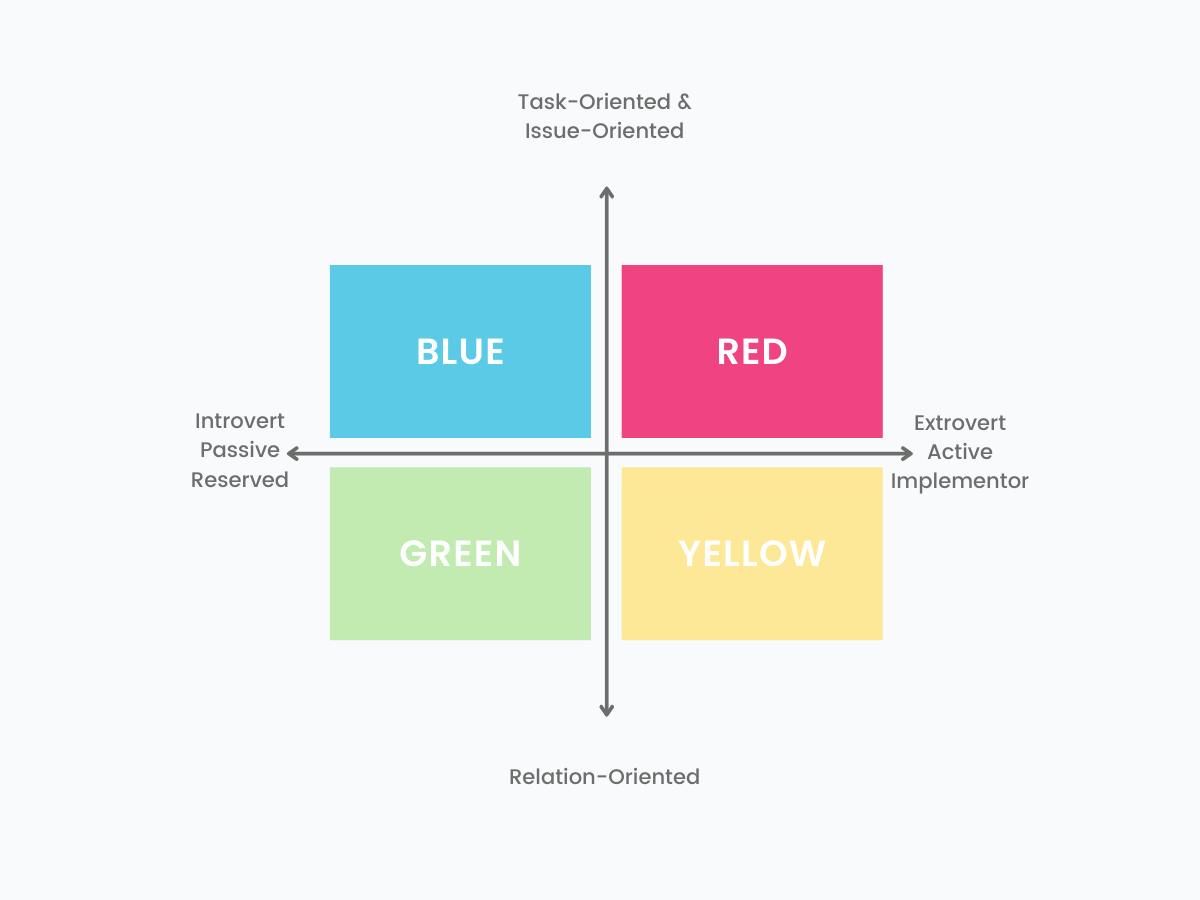Being a Project Manager (PM) goes hand in hand with communication. A ton of it. This is why knowing a bit of psychology behind different personality traits can work magic when it comes to coordinating projects, tasks and people.
Let’s say you are managing a project with 14 people from different cultures and backgrounds. If you communicate with all of them very straightforward and with an arrogant tone, most likely, 75% of your team will not like your style. Though it may sound very self-explanatory on paper, it is crucial to align your communication to each person’s nature. It will make you a better leader, increase your team’s satisfaction and improve your overall efficiency.
There are countless analyses, books and research papers done on character traits. However, one that grasped my attention was the book ‘Surrounded by Idiots’ written by Thomas Erikson. He is, among other things, a coach, leadership developer, and lecturer who has done a lot of research on workplace communication.
In his book, he divides people into four groups:
- Red
- Yellow
- Green
- Blue

The 4 Colors of Personality
As a Project Manager, try to have an individual approach to talks with your team members instead of just having a general level of communication where you show no interest, compassion, and value. Knowing and understanding the specifics of each personality color, as Erikson describes, can help you with that.
Red — The Leader
According to Erikson, the red ones are the rarest in the ‘book’. On the other hand, they are the easiest ones to distinguish in public.
People with ‘red’ personalities are the ones who:
- like to dominate in every field and conversation
- always have something significant to share
- don’t hesitate to interrupt you in the middle of a sentence
Taking risks is on their daily agenda and they thrive in leading the team through difficult times. Additionally, they have great competitive instincts and have no issues deciding or giving input on moving forward faster.
Yellow — The Cheer of the Group
Thomas states multiple times that a group or team needs at least one yellow person to create an enjoyable atmosphere and boost creativity.
A yellow coworker, be it a female or male, is the one who:
- is adventurous and likes to make any sort of situation fun
- everyone likes and has no issues with
- does not appreciate formalities
If you disrupt them just because their topic is not on the agenda, you will have a problem with them! People with yellow-colored personalities also tend to be very creative and like to express themselves in artistic ways.
Green — The Great Supporter
Whether you are wrong or right, they will always support you if you have made a good impression on a green one as they are the ones that:
- are the most stable and calm from all of the colors
- like to stay in the background
- will only give you input if needed and asked
Therefore, when communicating with a colleague who has a green-colored personality, try to stay calm and collected. Your success depends on it! Since they tend not to give out lots of information, expect to work hard to extract it. However, be sure not to shout. If so, you will lose them for sure.
Blue — The System and Order
Blues are the OCD color, where everything has to be perfect and in good systematic order. They appreciate if they:
- get as many details as possible for their tasks
- don’t have to work on ‘spontaneous’ assignments
- get time to process information
Before asking something from them, you will need to know how to be informal and direct. Finally, don’t come unprepared for a meeting as they appreciate order and discipline.
Human Complexity and Color Merges
It is important to mention that we are way too complex to make us fit in 4 colorful boxes as humans. Therefore, the author points out in his book that an individual will usually be a mix of two or more colors. In addition, people tend to change over various life situations and experiences. Even more so, different working environments can influence people’s personalities and responses too.
The result is that everyone will usually have one dominant color and a secondary one. The first is the one we are born with, while the second color is flexible, shows up from time to time and depends on the people and circumstances you are in your life.
One On One’s and Team Analysis
When you have learned about personality traits, it is time to use your knowledge in action. If you have been working with the same colleagues for quite some time already, you could probably already point out the personality colors of your team by the time you have finished reading this article. However, if you are new to a project or recently joined an existing one, it is essential to engage in introductions first.
One-on-one meetings are a great way to do so. From the way each team member will communicate with you alone, you will be able to distinguish which color of a personality they tend to be and pick out a communication style you should use in your interactions.
Finally, as a Project Manager, you need to make a team analysis of personality traits. Ask yourself:
- Which dominant color personality do you have among your group?
- Which kind of personality trait is more prevalent in your team?
- What does your team like and dislike in communication?
By knowing these as a Project Manager, you will be able to customize your communication approach to the specifics of your team and make daily work challenges you strive to solve together much more manageable and enjoyable.
Do you have what it takes to be a Project Manager in IT? You're in luck! We are currently accepting applications for a Project Manager position. Moreover, if you're a student looking to launch your IT career, join our next session of Povio Project Management Academy to get your IT career to the right start.
- Apply here for the on-site Project Manager position.
- Apply here for the remote Project Manager position.
No matter if you’re blue, red, yellow or green personality color, we’re looking for diversity.

